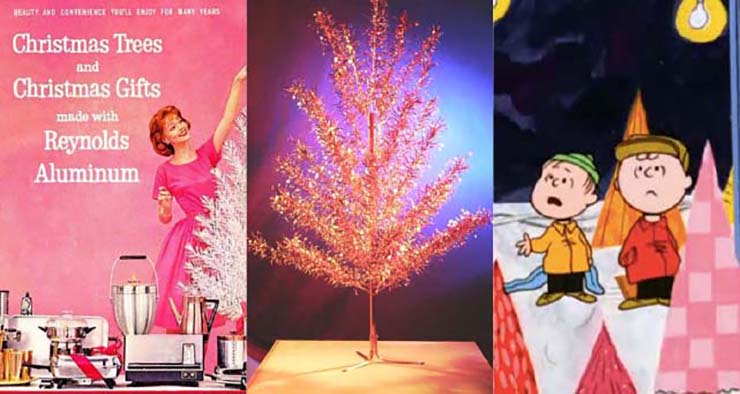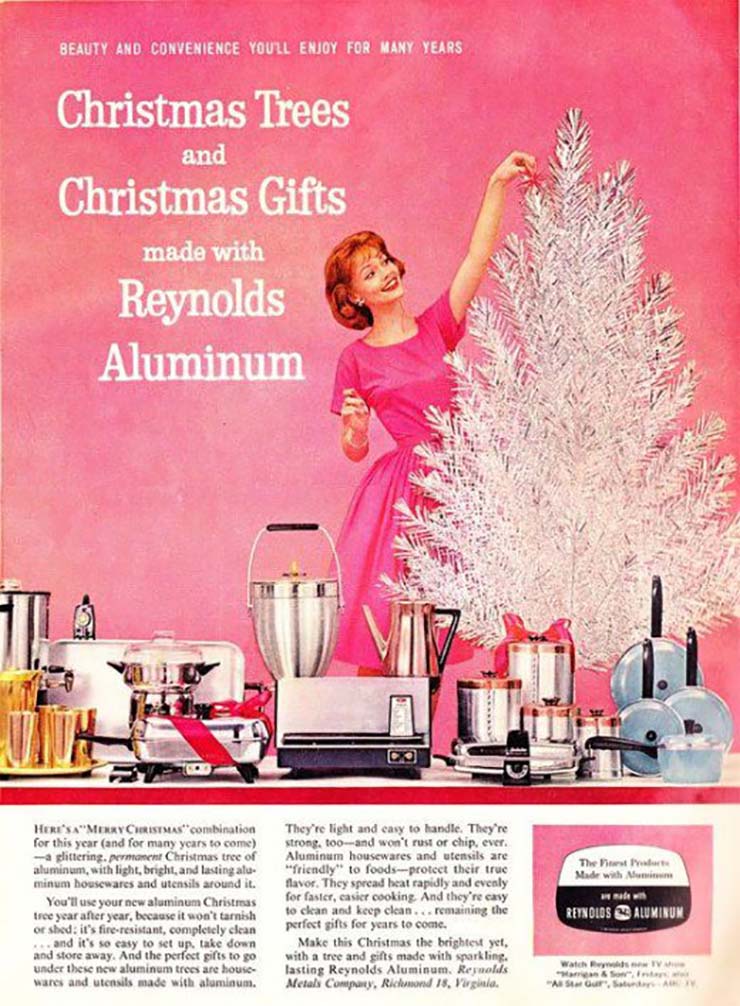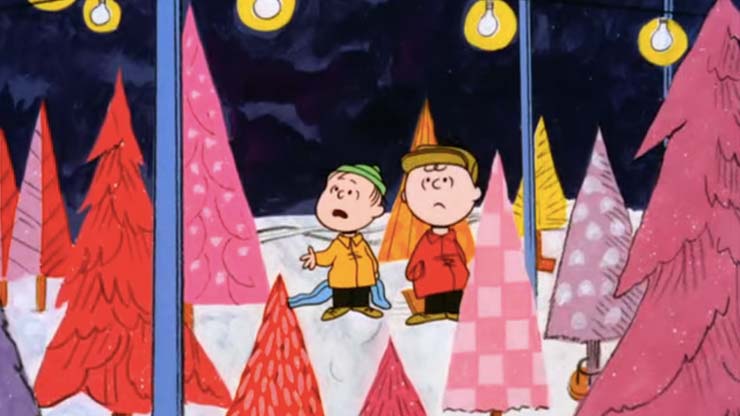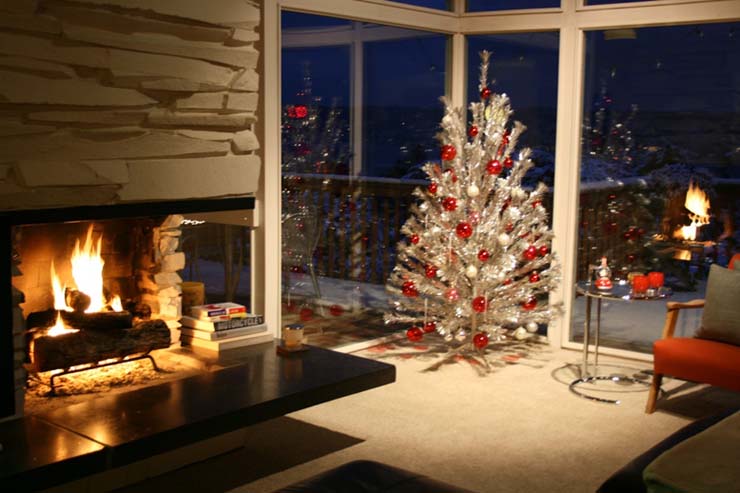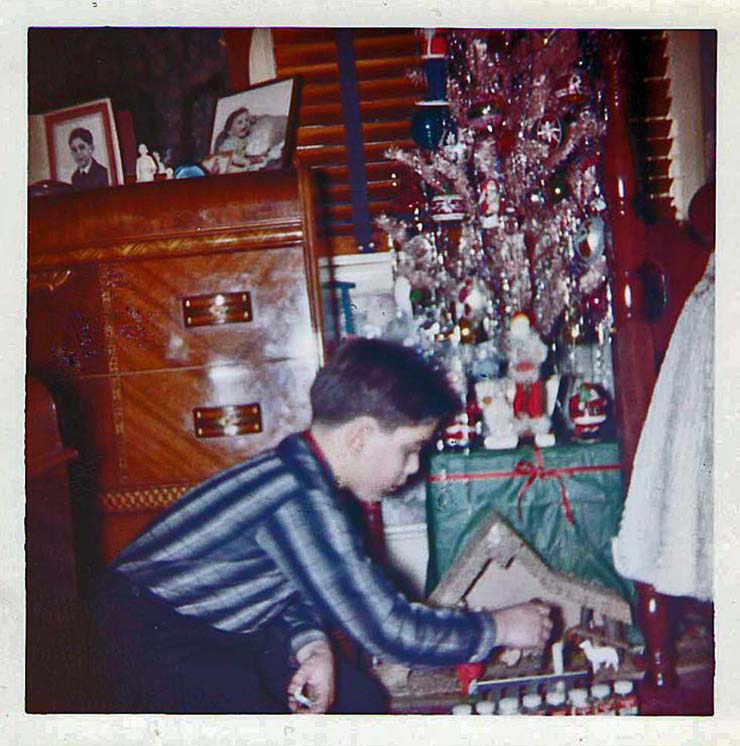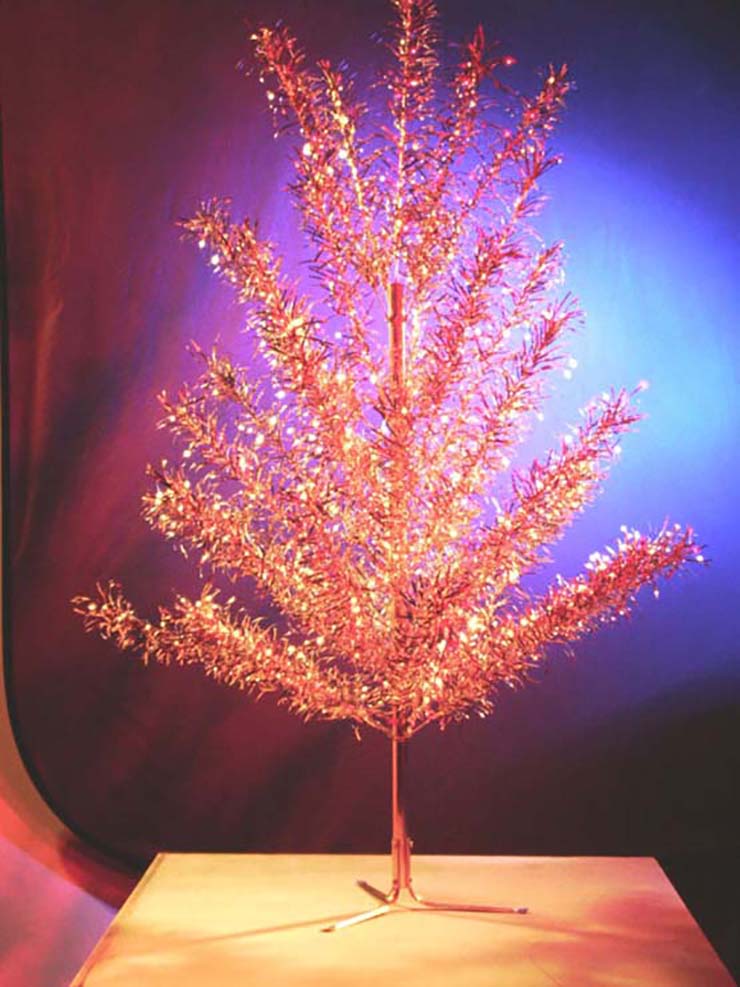HOW THE ALUMINUM (FAKE) CHRISTMAS TREE FAD GOT STARTED (& REVIVED)
Sarah Archer is the author of Midcentury Christmas and she told Jezebel how the aluminum Christmas tree came to be so popular.
“Fake trees generally actually go pretty far back…. Alcoa was the biggest manufacturer of aluminum for the war effort and for aluminum products throughout different parts of the 20th century.
They published a how-to dos and don’t design guide, which is amazing. You can find it online. It has these beautiful illustrations and things like;
• Don’t hang electric lights on them, because actually you’ll get electrocuted if you do that. They were very big about don’t put the lights on it. But Christmas lights are of course a huge thing in their own right, so they invented this optical color wheel that rotates. At the same kind of yard sale where you’d find a tree, you’d probably find a color wheel. And they would sort of move across the needles and reflect those colors, so if you had colorful ornaments, it was like you almost had the look and feel of Christmas lights.
You’ll see lots of household ads from the ’50s and ’60s that show an ultra-glam housewife with an aluminum tree…
They were hugely popular and new and modern looking and Space Age-y in the ‘50s and ‘60s, and then in the ’70s… In the ’80s and ’90s people would find them at estate sales and be like, oh my God, this is so cool.
Christmas in the ’50s and ’60s acquired a vogue for futurism—there was suddenly this real interest in futuristic toys and technology and images of Santa Claus riding rocket ships.
The funny thing now is that, to us, all the ’50s stuff looks totally old-school and ‘vintage’ Christmas means something like the first Star Trek series, that it was meant to be futuristic and now looks super-old. It is a tradition with many layers.”
My feeling is, if it’s fake, it might as well look fake. What I hate are pre-lit faux pine trees… that’s lazy and ugly, if you ask me.
This is my gold tree I put up every year which sits on a gold baby-grand piano and only gets, red, gold, silver and pink ornaments. In front of my fireplace is a live 16 ft tree.
(Photos, Wikimedia Commons; via Jezebel)

